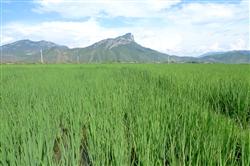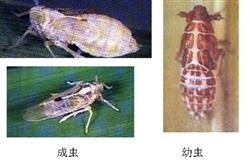How to dry the rice field? What's the use?

How to dry the rice field? What's the use? Please introduce the method of drying rice field is one of the main technical measures to increase the yield and promote early maturity of rice. First, the main role of drying field 1, control ineffective tiller, consolidate effective tiller. When the rice tiller has reached a certain number, that is, enough seedlings, the effective tiller termination period is about the end of June in our province, the early tiller can form a spike, and the tiller after the termination period can not form a spike or only a spikelet. Through the method of drying the field in production, the growth of high young tiller buds can be stopped without the supply of water and fertilizer, and the nutrient consumption can be reduced, so that the main stem and large tiller can get more nutrient supply, and lay a good foundation for strong stalk and large panicle. 2. Improve the soil environment and enhance the root activity. A certain water layer was maintained in the field for a long time from transplanting to drying, resulting in poor ventilation in the plough layer, inhibition of aerobic microorganism activity, and slow decomposition of organic matter, which was not conducive to root growth. Through the treatment of drying the field, the atmosphere can directly enter the plough layer, enhance the permeability of the soil, improve the soil structure and increase the content of oxygen in the plough layer. After drying, the number of new roots increased, promoted root extension, expanded the range of root activity, and enhanced the absorptive capacity. 3. Coordinate vegetative growth and reproductive growth. By drying the field, the level of nitrogen metabolism can be decreased, the rate of vegetative growth can be controlled, the ability of carbon metabolism can be improved and carbohydrate accumulation can be promoted. At the same time, it also inhibited the growth of internodes, the length of the first and second internodes at the base of rice stem became shorter, the culm wall became thicker, and the stem tissue was more compact, so it enhanced the ability of plant resistance to lodging and provided more nutrients for the early stage of rice panicle differentiation. After rehydration, more carbohydrates were transferred from stem and sheath to young panicle, which promoted the development of young panicle, and rice transformed from vegetative growth to reproductive growth, which satisfied the supply of nutrients for young panicle growth and development, and laid a good foundation for the formation of large panicle. 4. Reduce the field temperature and restrain the harm of diseases and insect pests. The occurrence and spread of many diseases and insect pests in rice are directly related to the temperature and humidity between rice plants. For example, the relative humidity of rice blast in the field is more than 90%, which is suitable for the reproduction and invasion of the pathogen. Bacterial blight is serious in the field when the relative humidity is more than 70%. Rice leafminer and stem borer, etc., when their eggs hatch and damage, also require higher humidity conditions. By drying the field, the air humidity among plants was reduced, the microclimate environment in the field was improved, the conditions of reproduction and transmission of bacteria and insect eggs were destroyed, and the occurrence and harm degree of diseases and insect pests were restrained. Second, the time and method of drying the field. 1. The drying of the field should be carried out at the end of tillering and the early stage of jointing. Drying the field too early affects the production and growth of effective tillers, too late, the growth of new tillers is too prosperous, and the differentiation rate of young panicles is delayed. If the tillering ability is medium, the field should be drained and sunburned when the tiller reaches 25-30 tillers per hole. 2. The stems and leaves of rice plants grow too vigorously, and the amount of nitrogen fertilizer is too much. If the leaves are blackened, the fields should be sunburned again and early. On the contrary, the weak growth of rice plants should be exposed to the sun late, light or not. 3. The soil layer is deep and fertile, and the rice plants are overgrown, and the blackened leaves should be tanned early and heavily; those with thin soil and poor fertilizer and water conservation should be exposed to the sun late and light. The clay layer with weak permeability should be exposed to the sun early and more often, and the leaking field should not be exposed to the sun. 4. When about 1/3 plants have been jointed in the field, the drying of the field should be stopped and normal water management should be carried out to ensure the water demand during the young panicle differentiation period and promote the growth and development of young panicle differentiation. At this time should be appropriate deep irrigation, control the water layer in 5-6 cm or so. 5. The drying time of the field is generally about 5-10 days. If you light the field, it is necessary to make a small crack on the surface of the field, and the human feet will not stick to the mud; the field in the middle of the sun will show chicken-claw-like cracks on the surface of the field; for the heavily tanned field, it is necessary to expose the white root and fade the leaf color. Leaves can stand upright. Click to get more rice planting techniques click to get more food crop planting techniques
- Prev

How to dry the rice field?
How to dry the rice field? Rice drying is an important measure to improve the soil structure of paddy field, promote the root system of seedlings, enhance the root activity of rice, improve the tenacity and lodging resistance of rice stalk, control ineffective tiller, increase panicle rate, improve field microclimate and reduce the occurrence of rice diseases and insect pests. But...
- Next

How to control rice brown planthopper and white-backed planthopper?
How to control rice brown planthopper and white-backed planthopper? Please introduce the method that brown planthopper occurs at grade 5 in two consecutive years, and has strong resistance to insecticide, while white-backed planthopper occurs in grade 3 to 4 in a row for many years. The main factors affecting the occurrence are migration and climatic conditions in summer and autumn. Brown planthopper broke out in the rice area of Vietnam in the winter of 2006.
Related
- The first cup of black tea in spring, the flavor and history of tea gardens in Kenya, Africa
- The computer can not only choose potatoes, but also grow tea rice. AI will grow winter oolong tea champion.
- It is not only the inflated tea bitten by insects, but also engraved with the four seasons tea in Beipu.
- The Oriental Beauty Tea Festival in Zhuxian County takes the stage at the weekend to experience the plus-size feast of oil tea.
- & quot; Oriental Beauty Tea & Exploration of Emei in Hsinchu, the hometown of quot;
- The new variety of strawberry "Tainong 1" dessert is the first choice with mellow aroma. Crimson gorgeous
- History of Tea in Taiwan: from Wild Inner Mountain to Export Tea Garden
- Two types of Taiwan Oriental Beauty Black Tea won the British three-Star Award for Childhood Tea Xiang Zhang Jiaqi changed from pilot to champion tea maker.
- Banana species and varieties: the planting history of Taiwan Xianren banana and dwarf banana is long, is banana disease resistant?
- Coffee planting Technology: Qianjie Coffee from Seedling to harvesting

